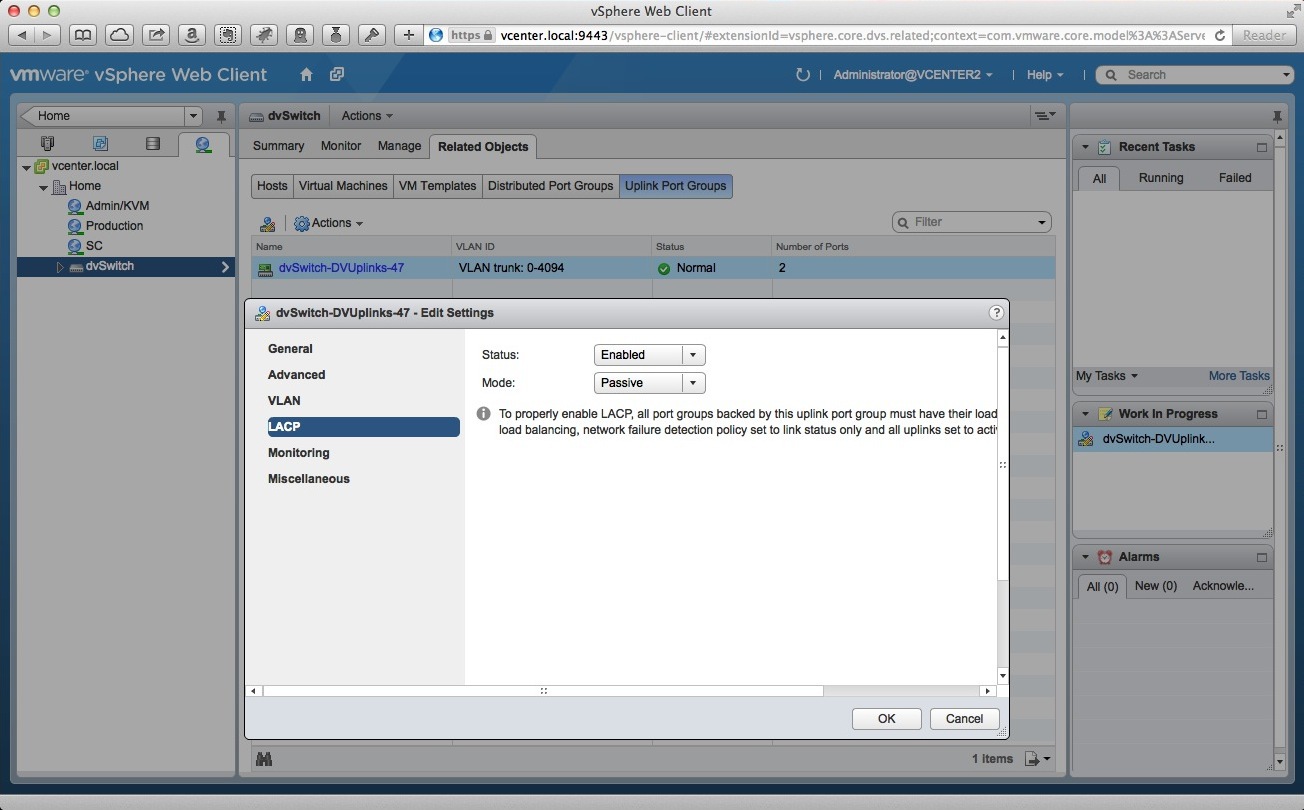LACP allows you to run network traffic over multiple interfaces between a single source and multiple destinations.
This allows you to push more network traffic with out having to get faster connections (for example, you may only need 4x 1G connections, and that would be much cheaper than upgrading your network to 10G). VMware’s ESXi supports the use of LACP if you are using vCenter and the vSphere Distributed Switch (vDS). The Standard Switch (vSS) doesn’t support LACP.
Juniper Config
The JunOS config is fairly straight forward. It looks like:
1 description esx01;
2 aggregated-ether-options {
3 lacp {
4 active;
5 periodic slow;
6 }
7 }
8 unit 0 {
9 family ethernet-switching {
10 port-mode trunk;
11 vlan {
12 members all;
13 }
14 }
15 }
16
17 {master:0}
VMware vCenter Config
From everything I’ve read (and a little exploring with the Linux vCenter Server), LACP can only be configured on the Windows version of vCenter Server (fixed in v5.5). Its accessed through the web interface (not VIC). Something like https://vcenter.local:9443 . Under networking, select the dvSwitch, go to related objects, and then uplink port groups. Choose actions, and select edit settings. It should bring up a window that looks similar to what is below.
You should now have your ESXi boxes functioning with LACP on your Juniper device.
Its worth noting that putting vCenter on the dVS is not advised. You can run into some chicken & egg scenarios which will leave your vcenter disconnected and seemingly unable to reconnect. It can be much easier to just keep a standard switch around for vCenter.


Comments